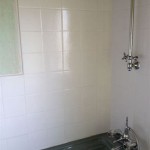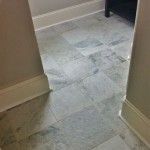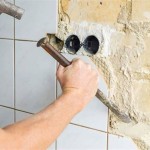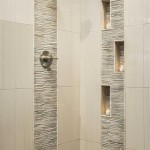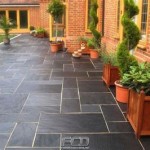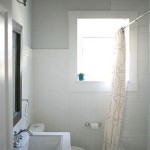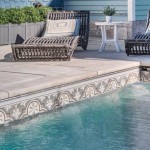```html
Construction Adhesive for Wall Tile: A Comprehensive Guide
Installing wall tile requires a secure and lasting bond. Construction adhesive, a specialized type of adhesive, offers a robust alternative to traditional thin-set mortar in certain wall tile applications. This article explores the various aspects of construction adhesive for wall tile, examining its benefits, limitations, selection criteria, application methods, and best practices for ensuring a successful and durable installation.
Understanding Construction Adhesive
Construction adhesive, also known as construction adhesive sealant or multi-purpose adhesive, is formulated to create a strong, flexible bond between different building materials. These adhesives generally consist of synthetic rubber polymers, resins, and solvents, resulting in a paste-like consistency that is easy to apply. Unlike thin-set mortar, which requires mixing with water and a curing process involving hydration, construction adhesive cures through solvent evaporation or chemical reaction, depending on the specific formulation. This characteristic often translates to faster setting times.
The primary function of construction adhesive in wall tile installation is to provide a tenacious bond between the tile and the substrate (the wall surface). This bond must withstand various environmental factors, including temperature fluctuations, humidity, and potential vibrations. Different types of construction adhesive offer varying degrees of strength, flexibility, and water resistance, factors that must be carefully considered based on the installation's specific demands.
While construction adhesives offer several advantages, it is crucial to understand their limitations. They are generally not suitable for all tile types or substrates and are not a universal replacement for thin-set mortar. For instance, large format tiles or installations exposed to significant moisture may require the superior bonding strength and water resistance of thin-set mortar.
Advantages of Using Construction Adhesive for Wall Tile
Construction adhesive presents several compelling advantages over traditional thin-set mortar in specific wall tile installations. These advantages often make it a preferred choice in situations where speed, ease of application, and specific substrate compatibility are paramount.
One of the most significant advantages is the ease of application. Construction adhesive is typically applied directly from a tube using a caulking gun, eliminating the need for mixing and the associated mess. This simplifies the installation process and reduces the time required for preparation. This can be particularly beneficial for smaller projects or DIY installations.
Another advantage is the reduced curing time. Construction adhesives generally cure faster than thin-set mortar, allowing for quicker project completion. This faster setting time can be a significant advantage in projects where minimizing downtime is critical. However, it is important to note that the specific curing time will vary depending on the adhesive formulation and environmental conditions.
Furthermore, certain construction adhesives exhibit superior flexibility compared to traditional mortar. This flexibility allows the adhesive to accommodate minor movement in the substrate without fracturing or compromising the bond. This is particularly beneficial in installations on substrates prone to expansion and contraction, such as drywall or plywood.
Finally, construction adhesive can often adhere to a wider range of substrates compared to thin-set mortar. Some adhesives are specifically formulated for use on non-porous surfaces or substrates that are difficult to bond with traditional mortar. This versatility makes them a valuable option for installations on challenging wall surfaces.
Key Considerations When Selecting Construction Adhesive
Choosing the right construction adhesive is crucial for ensuring a successful and long-lasting wall tile installation. Several factors must be carefully considered when selecting an adhesive, including the type of tile, the substrate material, the environmental conditions, and the desired performance characteristics.
The type of tile being installed plays a significant role in adhesive selection. Heavier tiles, such as natural stone or large format ceramic tiles, require adhesives with higher shear strength to prevent slippage and ensure a secure bond. Lighter tiles, such as glass or mosaic tiles, may be suitable for adhesives with lower strength requirements. It is always best to consult the tile manufacturer's recommendations regarding suitable adhesive types.
The substrate material is another critical consideration. Different substrates require different adhesive formulations to achieve optimal adhesion. For example, porous substrates like drywall will require an adhesive that can penetrate the surface and create a strong mechanical bond. Non-porous substrates like painted surfaces may require an adhesive with a high initial grab to prevent slippage during installation. Ensure the chosen adhesive is specifically formulated for the intended substrate.
Environmental conditions also influence adhesive selection. In areas exposed to high moisture levels, such as bathrooms or kitchens, it is essential to choose an adhesive that is water-resistant or waterproof. Temperature fluctuations can also impact adhesive performance, so it is crucial to select an adhesive that can withstand the expected temperature range. Consider the long-term exposure to these conditions and choose accordingly.
Finally, the desired performance characteristics should be considered. Factors such as flexibility, setting time, and VOC (volatile organic compound) content can influence the overall performance and suitability of the adhesive. For example, if flexibility is a primary concern, choose an adhesive specifically formulated for flexibility. If a fast setting time is desired, choose an adhesive with a quick cure time. If VOC emissions are a concern, opt for a low-VOC or VOC-free adhesive.
Proper Application Techniques for Construction Adhesive
Even the best construction adhesive will fail if not applied correctly. Following proper application techniques is essential for ensuring a strong and durable bond between the wall tile and the substrate. Surface preparation, adhesive application, and tile placement are all critical steps in the process.
Surface preparation is paramount. The substrate must be clean, dry, and free from any contaminants that could interfere with adhesion, such as dust, grease, oil, or loose paint. The wall should be inspected for any structural issues that may compromise the integrity of the tile installation. Repairs should be made before tiling begins. Loose paint should be scraped off, and uneven surfaces should be leveled. A suitable primer may be applied to enhance adhesion, especially on porous surfaces or painted walls.
Adhesive application should be done according to the manufacturer's instructions. Typically, construction adhesive is applied to the back of the tile or directly onto the substrate using a caulking gun. The adhesive should be applied in a consistent pattern, such as beads or ribbons, ensuring adequate coverage. Avoid applying too much adhesive, as this can create a thick layer that may not cure properly and can lead to tile slippage. The amount of adhesive used should be appropriate for the size and weight of the tile.
Tile placement should be done promptly after adhesive application. Press the tile firmly into place, ensuring good contact with the adhesive. Use spacers to maintain consistent grout lines. Check for plumb and level during installation. Remove any excess adhesive that squeezes out between the tiles. Allow the adhesive to cure completely according to the manufacturer's instructions before grouting.
Proper ventilation is crucial during and after application, especially when using solvent-based adhesives. Wear appropriate personal protective equipment (PPE), such as gloves and eye protection, to avoid contact with the adhesive. Dispose of used adhesive tubes and rags properly.
Addressing Common Problems and Troubleshooting
Despite careful planning and execution, problems can sometimes arise during wall tile installation with construction adhesive. Understanding common issues and knowing how to troubleshoot them can help prevent costly mistakes and ensure a successful outcome.
One common problem is tile slippage. This can occur if the adhesive does not have sufficient initial grab or if too much adhesive is applied. To prevent slippage, choose an adhesive with a high initial tack and apply only the recommended amount. Use shims or temporary supports to hold the tiles in place until the adhesive cures. Ensure the wall surface is properly prepared and relatively flat.
Another potential issue is inadequate adhesion. This can be caused by insufficient surface preparation, the use of an incompatible adhesive, or improper application techniques. Ensure the substrate is clean, dry, and free from contaminants. Select an adhesive specifically formulated for the tile and substrate materials. Apply the adhesive according to the manufacturer's instructions and ensure adequate coverage.
Bond failure can occur if the adhesive is exposed to excessive moisture or temperature fluctuations before it is fully cured. Protect the installation from moisture and extreme temperatures during the curing process. Allow the adhesive to cure completely according to the manufacturer's instructions before exposing the tiles to water or high humidity.
If issues arise, consult the adhesive manufacturer's technical data sheet or contact their technical support team for assistance. They can provide valuable guidance on troubleshooting specific problems and recommending appropriate solutions.
In conclusion, construction adhesive can be a valuable tool for installing wall tile in certain situations. By understanding its advantages, limitations, selection criteria, application methods, and troubleshooting techniques, installers can achieve a strong, durable, and aesthetically pleasing result.
```
Liquid Nails Fuze It Adhesive

Quikrete 10 1 Oz Construction Adhesive 990210 The Home Depot

Liquid Nails 10 Oz Heavy Duty Construction Adhesive Ln 901 The Home Depot

Loctite Power Grab Express Heavy Duty Construction Adhesive Versatile Glue For Wood Wall Tile Foam Board More 9 Fl Oz Cartridge

Liquid Nails 10 Oz Voc Tub Surround And Shower Walls Low Adhesive 24 Pack Ln 715 24cp The Home Depot

Loctite Power Grab Express Heavy Duty Construction Adhesive Versatile Glue For Wood Wall Tile Foam Board More 9 Fl Oz Cartridge

Quikrete 10 1 Oz Construction Adhesive 990210

A La Maison Ceilings Instant Grab Ceiling Tile Wall Panel Water Based Adhesive Solvent Off White Landscape Interior Exterior Construction 10 Fl Oz Fluid 24 Pack In The Department

A La Maison Ceilings Instant Grab Ceiling Tile Wall Panel Water Based Adhesive Solvent Off White Landscape Interior Exterior Construction 10 Fl Oz Fluid 12 Pack In The Department

Loctite Power Grab Express Heavy Duty Construction Adhesive Versatile Glue For Wood Wall Tile Foam Board More 9 Fl Oz Cartridge
Related Posts

